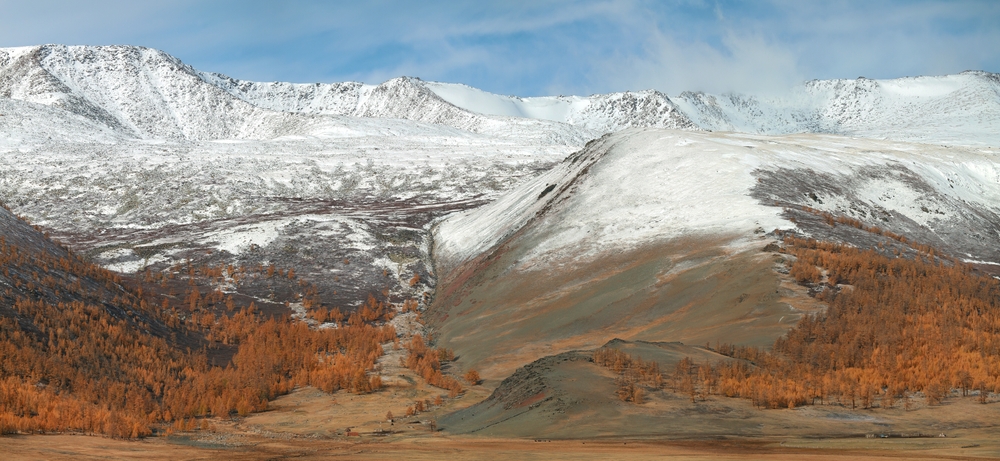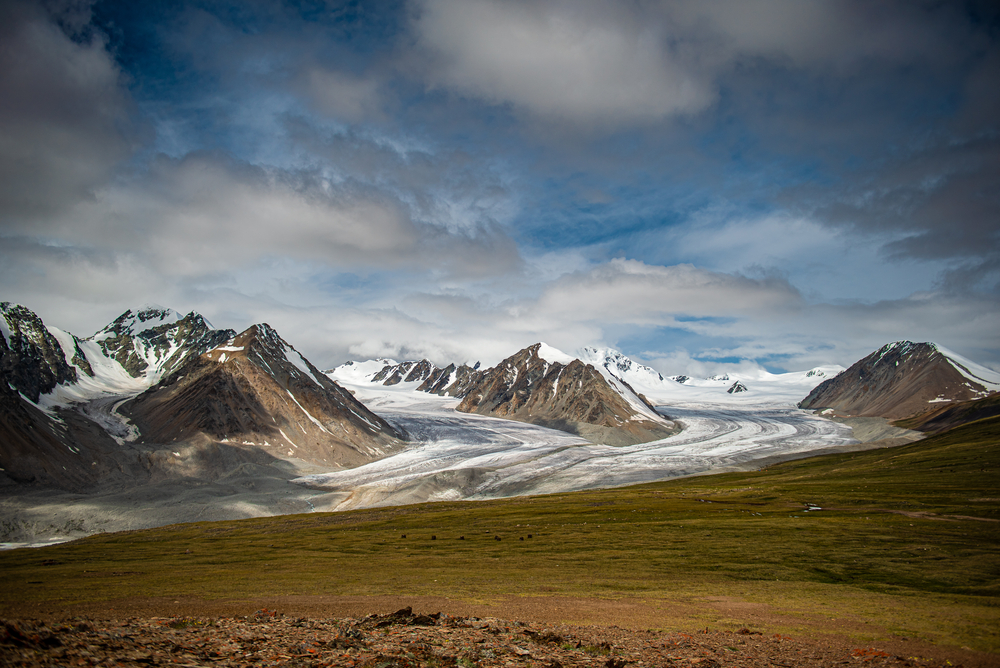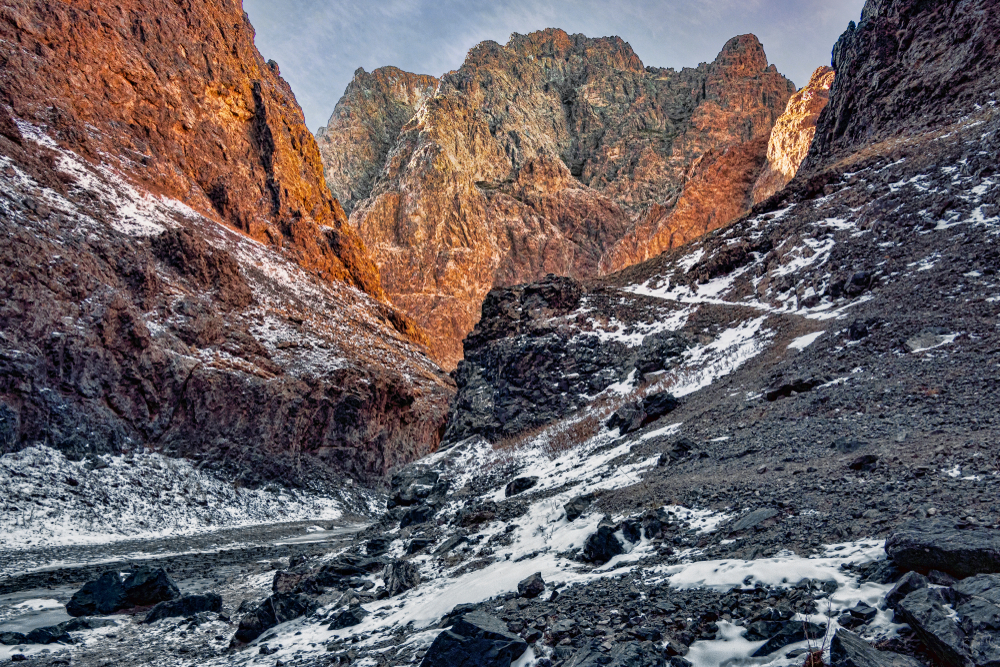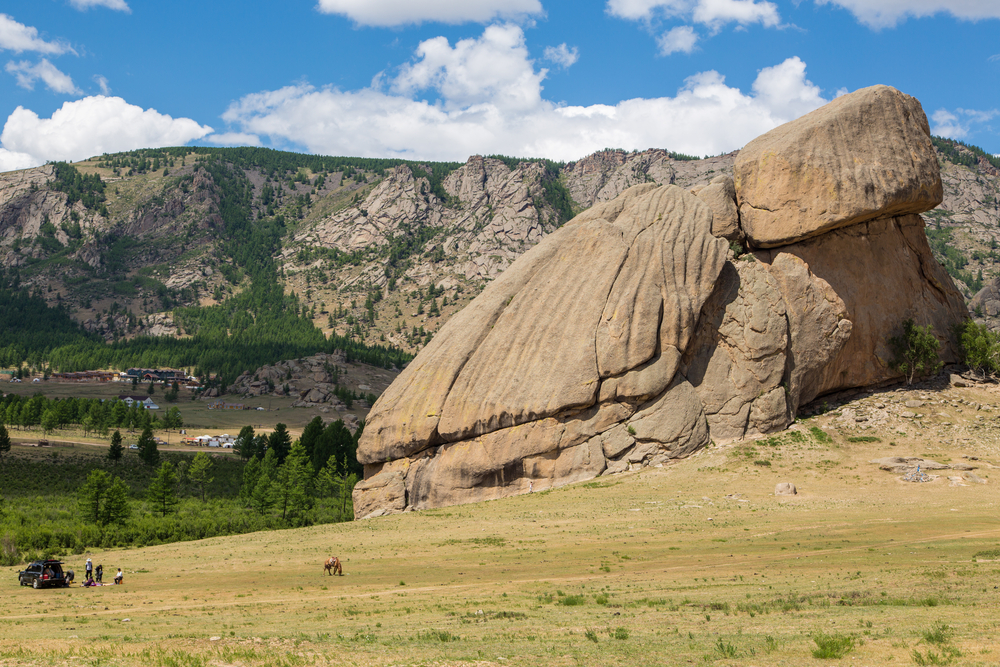Bulgan Gol-Ikh Ongog Overview
Bulgan Gol-Ikh Ongog National Park, located in Mongolia, is a stunning protected area that spans an impressive 1,340 square miles (3,470 square kilometers). Situated in the western part of the country in Bayan-Ölgii Province, the park’s name in the local Kazakh language reflects the cultural heritage of the region.
It is named after the Bulgan River and Ikh Ongog, which are central features of this remote and pristine wilderness. The park forms a part of the Altai Mountains ecosystem, showcasing dramatic landscapes, diverse ecosystems, and unique wildlife that captivate visitors from around the globe.
The terrain of Bulgan Gol-Ikh Ongog National Park is a mesmerizing mix of rugged mountain ranges, vast alpine meadows, and river valleys. The towering peaks of the Altai Mountains dominate the scenery, with snow-capped summits offering breathtaking views throughout the year. Glacial lakes, such as Lake Dayan and other high-altitude water bodies, punctuate the park, adding to its serene beauty.
The Bulgan River meanders through the area, nourishing a variety of vegetation, including lush green grasses, wildflowers, and patches of Siberian larch forests. The stark contrast between the rocky cliffs and fertile valleys creates a striking mosaic of colors and textures.
Wildlife thrives in the unspoiled environment of Bulgan Gol-Ikh Ongog. The park is home to an array of mammals, including the elusive snow leopard, Argali sheep, Siberian ibex, and gray wolves.
Birdwatchers will find the region particularly rewarding, with golden eagles, bearded vultures, and Himalayan griffons frequently soaring above the mountainous terrain. The park also serves as an important migratory route for a variety of bird species, making it a significant area for avian biodiversity. Small mammals like marmots and pikas add to the charm of the landscape, often seen scurrying across the meadows.
Visitors to Bulgan Gol-Ikh Ongog National Park are drawn to its serene natural beauty and cultural significance. Popular features include hiking trails that offer unparalleled views of the Altai Mountains and opportunities to encounter wildlife in their natural habitat. The park is also a haven for photographers and nature enthusiasts eager to capture its untamed wilderness. Cultural experiences are another highlight, as the area is inhabited by Kazakh nomads who maintain traditional lifestyles, including the famous eagle hunting practices.
Conservation efforts in Bulgan Gol-Ikh Ongog National Park have faced challenges, including the impacts of climate change, illegal poaching, and overgrazing. However, the Mongolian government and international organizations have collaborated on initiatives to protect the park’s unique ecosystems and wildlife. Local communities play a critical role in these efforts, combining sustainable tourism practices with their traditional knowledge to preserve the park’s natural and cultural heritage.













































































